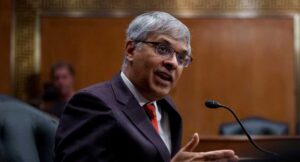The Department of Government Efficiency (DOGE) this week claimed it had canceled 30 leases for US Food and Drug Administration (FDA) facilities nationwide, including a facility in St. Louis, MO, which is crucial to the agency’s drug testing operations. The department claims the cancellations will save almost $9M over the next year and at least $29.6 million in total.
The White House and Department of Health and Human Services (HHS) did not respond to Focus’s inquiries about when the leases expire and whether any FDA staff at those facilities will lose their jobs or be reassigned. FDA, however, directed Focus’s questions to the General Services Administration (GSA).
According to Howard Sklamberg, a partner at Arnold & Porter and a former FDA deputy commissioner for global regulatory operations and policy, the cuts could have long-term consequences for the safety and efficacy of the products the agency regulates. He told Focus FDA has more than 200 offices in the US and worldwide that vary in size, including the facility in St. Louis that is critical to the agency’s oversight drug quality.
“That laboratory is FDA’s most important pharmaceutical lab in the country,” said Sklamberg. “That laboratory performs most of the testing program overseen by FDA’s Center for Drug Evaluation and Research… [and] is an important part of the postmarket surveillance of drugs.”
“The drug supply is quite safe, but in the medium- and long-term, [closing the facility] increases the risk of drugs that are unsafe or not effective,” he added.
Drug manufacturers are required to conduct their own testing, but FDA also inspects manufacturers’ laboratories and third-party labs. Furthermore, the agency does its own drug testing to ensure it conforms to regulatory standards, much of which is done at the St. Louis facility.
“Any significant cut in that lab would put a big gap in FDA’s drug testing program, which is an important part of ensuring the safety and efficacy of drugs,” said Sklamberg. “It is a very important lab that has some very talented scientists in it who perform an incredibly important service for the public.”
Former FDA Commissioner Robert Califf also raised concerns about the lease at the St. Louis facility being terminated.
“This facility was critical to solving life and death issues like the adulteration of heparin that caused a lot of death and illness till it was solved and the nitrosamine adulteration situation that has been an ongoing issue,” Califf told Focus. “Pharmaceutical quality is essential to FDA’s mission and with current facilities, it’s really an oversight function for the industry that is expected to adhere to quality standards.”
“Taking that away could easily lead to a regrettable direct impact on serious harm to unsuspecting and vulnerable patients,” he added.
Califf also noted that FDA had already developed a plan long before last year’s elections to optimize the agency’s lab functions, and he’s not opposed to including the physical footprint of the labs in that discussion. However, he said it has been hard to include that in past discussions due to congressional oversight since it may affect jobs for constituents.
“What’s missing is the full plan and evaluation—it needs to be publicly vetted and all the benefits and risks should be laid out,” said Califf.
When asked about the facility leases, a GSA spokesperson told Focus that acting Administrator Stephen Ehikian’s vision for the agency includes reducing deferred maintenance liabilities, supporting the return to office of federal employees, and taking advantage of stronger private and government partnerships in managing the federal workforce.
“GSA is reviewing all options to optimize our footprint and building utilization,” said the spokesperson. “A component of our space consolidation plan will be the termination of many soft term leases.”
“To the extent these terminations affect public facing facilities and/or existing tenants, we are working with our agency partners to secure suitable alternative space,” the spokesperson added. “In many cases this will allow us to increase space utilization and obtain improved terms.”
GSA also emailed a statement that its Public Buildings Service (PBS) has identified federally owned assets that are not considered core to government operations, some of which belong to FDA. It said many of the 440 non-core assets, primarily consisting of office space, have become functionally obsolete and unsuitable for the federal workforce.
“GSA will consider non-core assets for divestment from government ownership in an orderly fashion to ensure taxpayers no longer pay for empty and underutilized federal office space, or the significant maintenance costs associated with long-term building ownership — potentially saving more than $430 million in annual operating costs,” said the agency.
After this article was first published, GSA removed some buildings from its non-core assets list, including some FDA buildings, and eventually removed the entire list from its website. The GSA website now states that such a list is “coming soon” and that the administration is in the process of identifying non-core government properties for disposal.
In the opening weeks of the Trump Administration, DOGE has acted to make broad cuts across the federal government in its stated goal of reducing federal spending. Sklamberg noted that he worked for FDA for seven years, much of that time in senior positions, and it took him a long time to understand the complexities of the agency’s operations and how things are prioritized.
“It’s hard for me to see how a small number of people in a very short amount of time can have the information needed to prioritize what FDA does from a public health perspective,” said Sklamberg.
“FDA’s budget is comparatively quite small, it’s about $7B, half of which is paid by companies in user fees,” he added. “When cutting FDA’s budget, one has to be very careful that they’re not jeopardizing functions that could create a risk to people’s health and lives.”
Stephen Grossman, an FDA regulatory consultant and author of FDA Matters, agreed with the sentiment.
“There are well-established protocols for downsizing the federal government,” Grossman told Focus. “It requires evaluation of needs, identification of priorities, and establishment of a plan that leaves the remaining government services viable.”
“Instead, both lay-offs and shuttering of facilities are being done by fiat,” he added. “For employees that has meant callbacks and for facilities that will ultimately mean re-openings. It’s much better to have a plan and do it right from the beginning.”
The New York Times on Monday reported that DOGE has, once again, revised its estimate of savings down, this time to the tune $4 billion after erasing or altering more than a thousand federal contracts it had eliminated on its website that accounted for 40% of all contracts listed on its site. Its initial claims of $16B in savings have been whittled down to $9B so far, which is a far cry from the $2 trillion that the Trump administration has stated it wants to cut.
The following is a list of the 30 FDA field offices where DOGE has ended the leases and their estimated costs and savings from its website:
| Location | Annual Cost | Total Savings |
| ATLANTA, GA | $ 446,286 | $ – |
| DAVENPORT, IA | $ 12,312 | $ 36,936 |
| SOUTH BEND, IN | $ 28,745 | $ 11,977 |
| WICHITA, KS | $ 46,863 | $ 74,200 |
| BOYLSTON, MA | $ 56,349 | $ 98,610 |
| WARWICK, RI | $ 107,126 | $ 276,743 |
| EAST PROVIDENCE, RI | $ 59,161 | $ 211,993 |
| NASHVILLE, TN | $ 388,552 | $ 777,105 |
| MEMPHIS, TN | $ 323,607 | $ 701,149 |
| IRVING, TX | $ 115,742 | $ 414,741 |
| TEMPE, AZ | $ 151,150 | $ 1,410,731 |
| ONTARIO, CA | $ 140,262 | $ 128,573 |
| PEORIA, IL | $ 19,026 | $ 33,295 |
| COLUMBUS, OH | $ 121,125 | $ 262,436 |
| BALTIMORE, MD | $ 77,572 | $ 213,324 |
| SAN CLEMENTE, CA | $ 699,986 | $ 933,314 |
| SAN JOSE, CA | $ 220,598 | $ 110,299 |
| WILMINGTON, DE | $ 95,385 | $ 310,002 |
| PLANTATION, FL | $ 414,703 | $ 691,172 |
| TALLAHASSEE, FL | $ 39,290 | $ 288,124 |
| ST. LOUIS, MO | $ 2,457,367 | $ 19,249,372 |
| MADISON, WI | $ 121,221 | $ 272,746 |
| SALT LAKE CITY, UT | $ 95,124 | $ 475,620 |
| GREENSBORO, NC | $ 24,855 | $ 16,570 |
| NEWARK, NJ | $ 633,783 | $ 2,112,611 |
| WAUWATOSA, WI | $ 187,375 | $ 499,666 |
| LONG BEACH, CA | $ 952,904 | $ – |
| SAN DIEGO, CA | $ 454,339 | $ – |
| LOUISVILLE, KY | $ 101,765 | $ – |
| OMAHA, NE | $ 34,357 | $ – |
| Total | $ 8,626,930 | $ 29,611,309 |
RAPS.org









